How to Keep Your Polarized Sunglasses Like Brand New
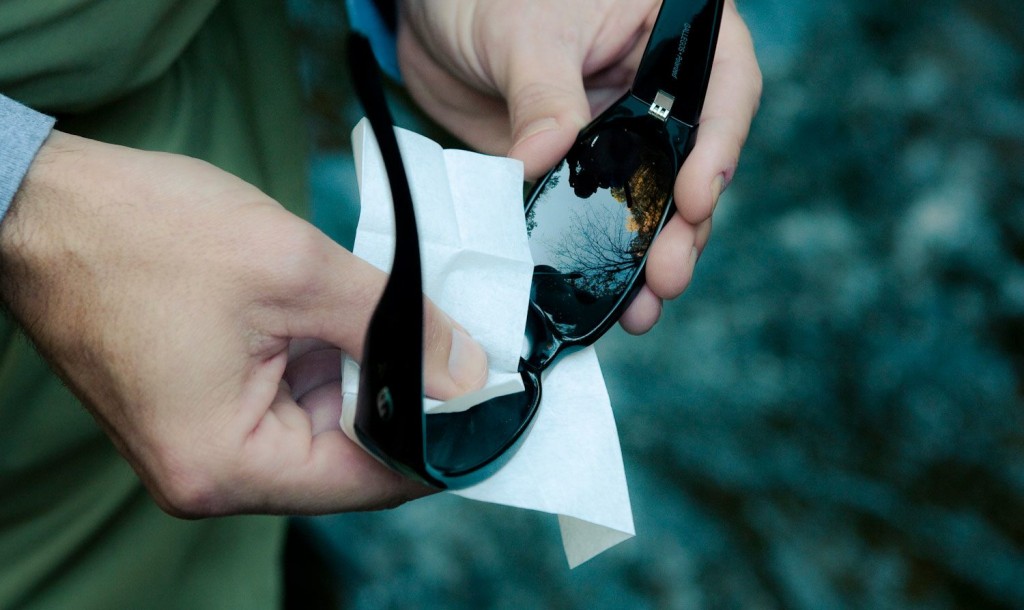
Look out micro-fiber cloths, there’s a new player in town
My polarized sunglasses are a critical piece of equipment in my fly fishing and guiding. I depend on them for keeping my vision clear and crisp, so I can untangle knots quickly, spot fish effectively and make precise presentations on the water. I don’t know about you guys, but I’m constantly having to clean the lens on my sunglasses on and off the water to keep them functioning at their highest level. In the past, I’ve depended primarily on using micro-fiber cloths to clean my polarized sunglasses. These micro-fiber cloths work pretty well, but after a while, they get packed full of dirt and grime or get saturated on those wet days, and start losing their effectiveness. I’ve got some micro-fiber cloths now that really don’t clean all that well, even after I’ve taken the time to wash them. Plus, I’m always trying to find a place to stow them in a safe place that’s free of dirt and dust, like a zip-lock bag.
Recently, my parents turned me onto Zeiss Lens Cleaning Wipes. You can purchase them at your local Walmart or Pharmacy (Rite-Aid or CVS), from $3-10 depending on the size of the box. I’ve fallen in love with these individually wrapped pre-moistened lens cleaning wipes, that are safe to use on your sunglasses, camera lens and electronics. It takes just a few seconds to unwrap one of these pre-moistened wipes, and do a quick once over on the gear you need cleaned. Almost instantly, it dries 100%, leaving you with a super clean surface that looks brand new. These days, before I head out for a day on the water, I quickly clean my polarized sunglasses with them, and then throw three or four more in my shirt or jacket pocket in case I need them. If you fish in saltwater,
Read More »GAS
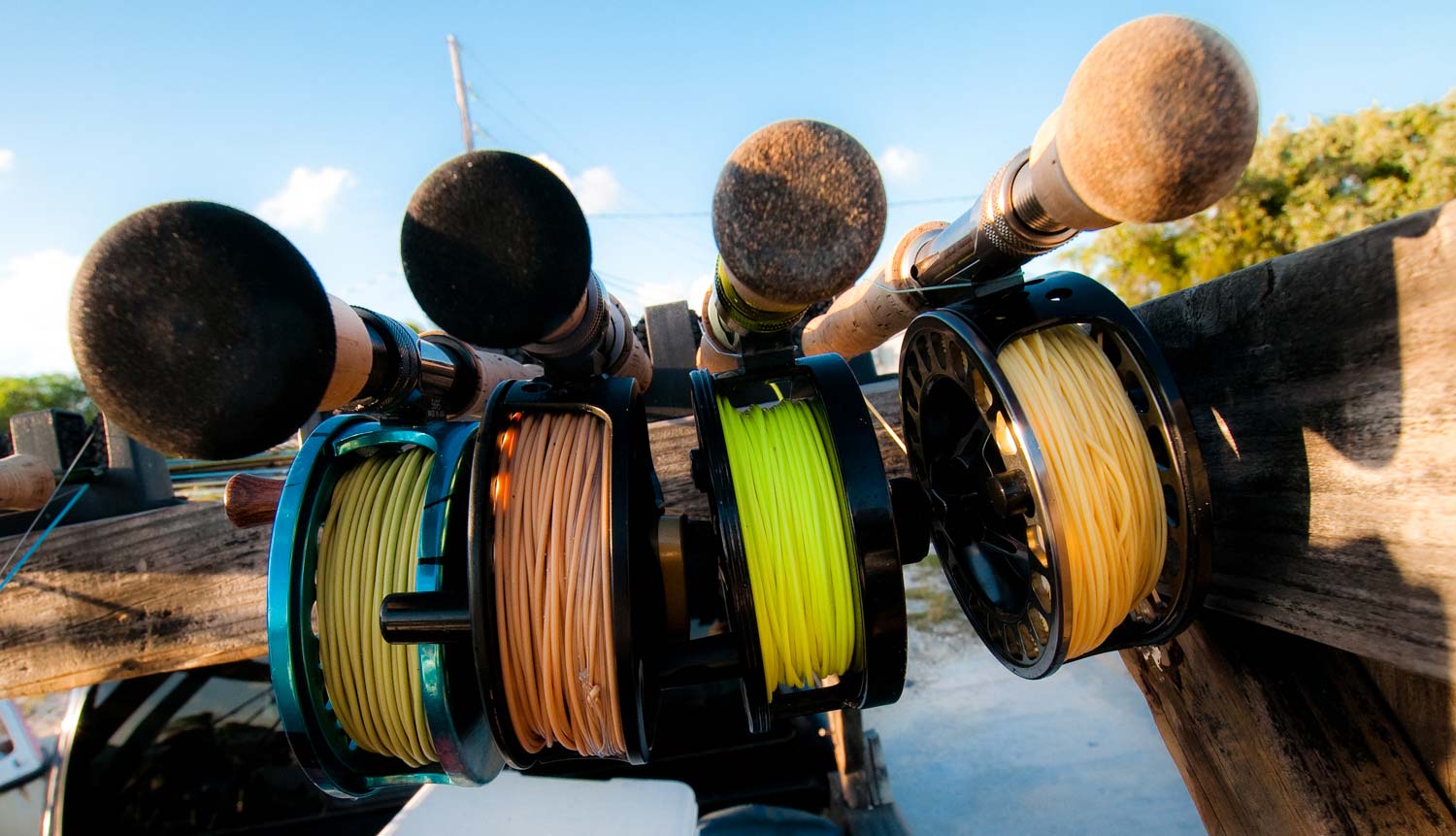
By John Byron
It’s a thing. Gear Acquisition Syndrome. GAS.
The most you can use at any one time is one. One guitar. One fountain pen. One fly rod. But how many you have is N, where N is a much bigger number than one.
That’s GAS.
The concept and phrasing, GAS, came from the world of music. Yes, how many guitars, pickups, mikes, etc. does a person need? And from photography, cameras, lenses, etc.
But perhaps the largest cluster of GAS-plagued souls is in fly fishing: rods, reels, lines, boots, buffs, hoodies, packs and the list is endless.
Does the rumor of a new line of fly rods from Scott or Loomis or Sage make your heart flutter? Has Amazon told you that you can’t return any more purchases for refund? Have you convinced your significant other that only a certain line on a certain reel will actually catch bonefish and you don’t have either but found a sale price online and your next trip will fail if you don’t buy them?
These are signs of GAS. But the surefire way to know if you’ve got it is to look in your garage or down in your basement:
Are your fly rods a small, neat collection of well-purposed tools? Or an inventory challenge?
Did you recently look in a drawer, find a reel, and say ‘Gee, I forgot I had that’?
Do you have to move a lot of fishing tackle aside to find fishing tackle?
Do you have more than twenty
River Of Dreams
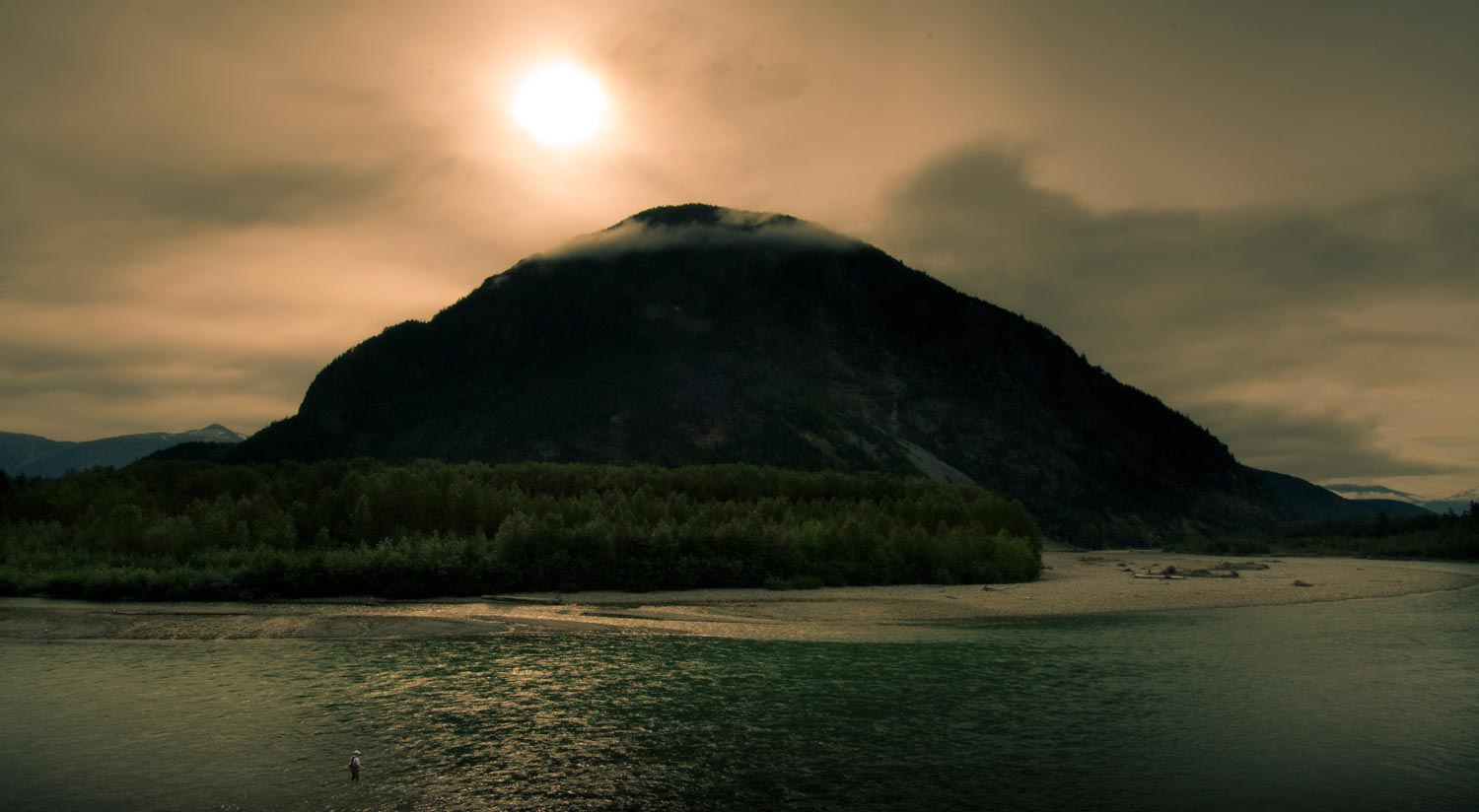
By Louis Cahill
I DREAM OF WAKING IN A FOREST.
Or where a forest had been, now sooty black. Smoke swirls, orange eyes peer from hunks of coal. Charred trees accuse the sky. White ashes whirl in the air, angels lifted to heaven. I’ve slept through some great conflagration.
I walk, leaving white footprints on blackened ground. Smoke, steals my vision. Trees turn from black to gray, to white. I stop at a river bank where ash becomes grass, high and yellow like autumn. Dark water churns, its surface oily in the soft light. Standing in the river, bare to the waist, my father, his eyes fixed on the water, his hair wet and tossed, his arms outstretched like a cormorant drying its wings. In the current, the dark shapes of fish.
I follow the sound of falling water to a large pool ringed with tall grass. At its center, a deep black pit. The pool flows in on itself, the water pouring over a rocky rim, angry, foaming white. The sound deafening. A gaping bottomless maw, ringed with white foaming teeth, swallows the river and roars at the sky.
***
I think of my father now and see him, not drawn and frail. Not balled and withered, eaten with cancer but a strong young man, shirtless with wild, wet hair. A man from a black and white photograph. The luxury of survival, to carve the past in a form more pleasing.
Standing in an Oregon river, in a run instantly familiar, I swing a fly for steelhead.
Read More »The Winston Air 2 “Dark Horse”: Video
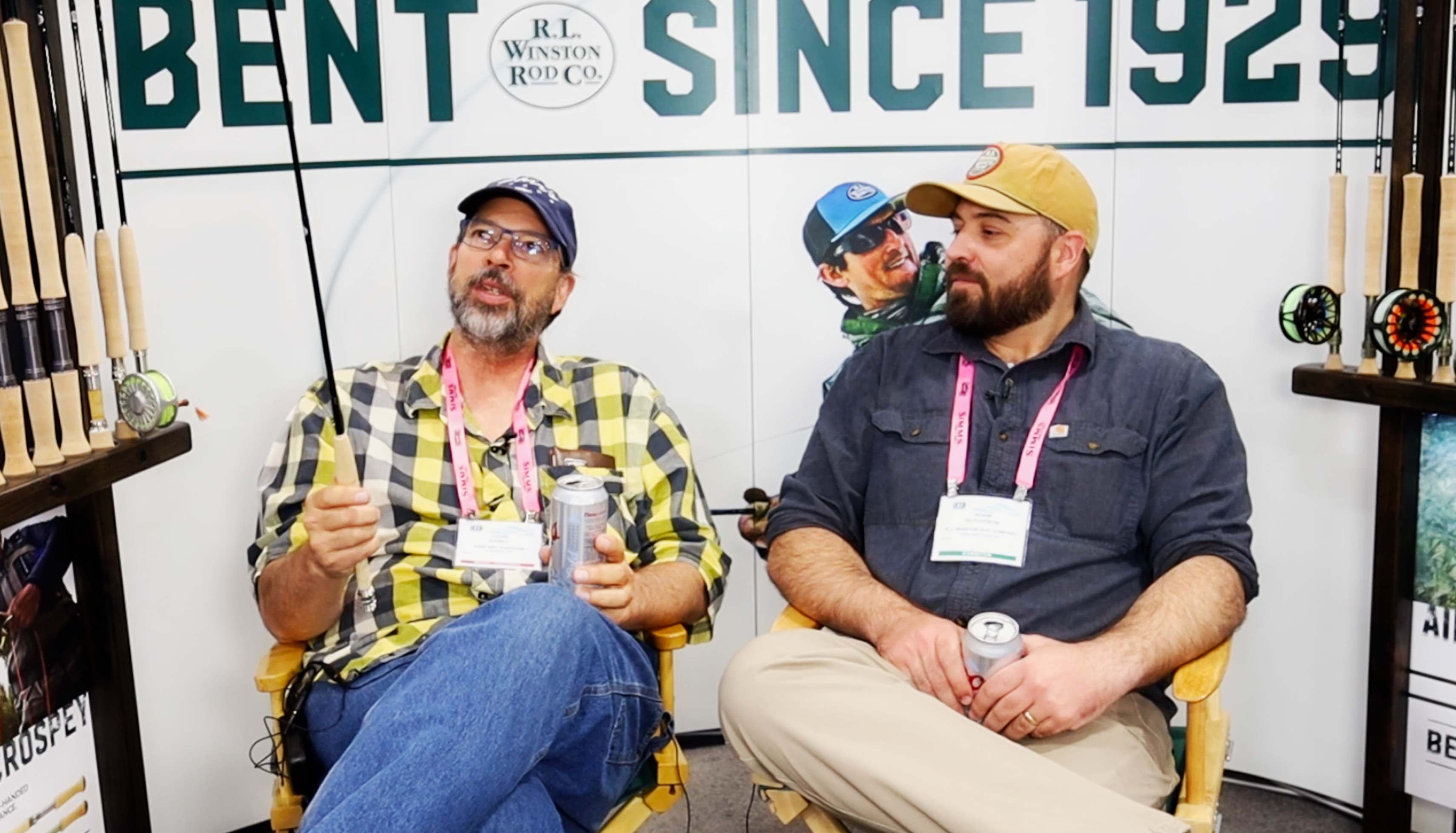
Winston makes a statement with the new Air 2 fly rod.
IFTD was defiantly small this year. One of the upsides of that was, I actually got to cast some rods. Winston’s new Air 2 floored me, and apparently everyone else as it took home the award for best freshwater fly rod. In this video Adam Hutchinson and I talk about what makes the Dark Horse special and the road ahead for Winston. There’s also a little spontaneous discussion about beer of choice. Some of you may approve.
HAVE A BEER AND HEAR ALL ABOUT THE NEW WINSTON AIR 2 FLY ROD!
Read More »6 Ways To Instantly Start Taking Better Fish Photos

By Kyle Wilkinson
Long before the days of Instagram or Facebook, taking pictures of a prized catch was still a big part of the fishing experience for most anglers. As you might be able to imagine, I see A LOT of fish pictures given my current occupation. I also take a lot, too. Now I know everyone has their own opinion about how to appropriately photograph a fish (or if it should even be done) but the fact remains that the good ol’ grip n’ grin is here to stay. In my opinion there’s nothing wrong with this either. And while these days I certainly don’t take a picture with every fish I catch and more often than not try to focus on a more ‘creative’ approach to my fishing photography, sometimes it still feels good to simply hold one up for the camera.
But back to the point of this. As mentioned, I see a lot of fish photos and quite truthfully, a lot of them are pretty bad. If you’ve ever found yourself telling your buddies ‘this picture doesn’t do this fish justice’ (while secretly wondering why that 20” brown looked more like 12” in the photo) then I suggest you read on. Not only will these tips lead to better fish photos, it will also ensure you’re taking better care of the fish by getting your shot quicker, and therefore getting the fish back to the water (you guessed it)…..quicker.
1. Get Down- This is a simple one and in my opinion, helps the fish out just as much as your photographic desires. Once you’ve landed the fish and are near a shallow area, get down on your knees to handle/photograph the fish. Just as important, however, is that your photographer does the same. Your goal here is to get the camera having a straight line shot at you and the fish. Another benefit to this method is that if the fish does slip out of your hands back into the water, it’s going to have a much shorter/safer fall. Additionally, always keep the fish over water in the event it does end up back in the drink quicker than expected. Fish are no different than us in the fact that it feels much better to fall into water than onto rocks.
2. Belly To The Bottom- This is another one I see time
Read More »Have A Plan Before You Tie
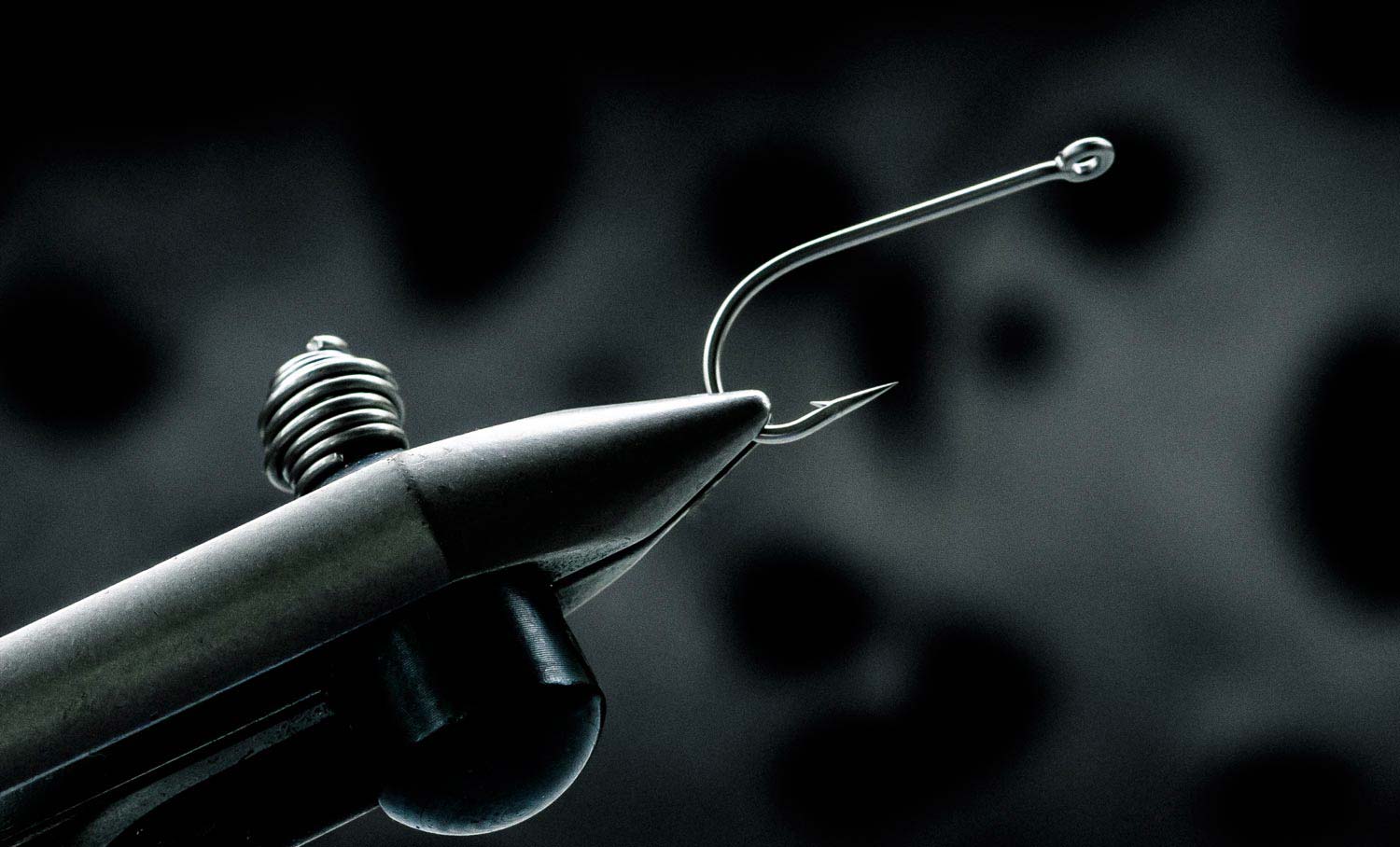
By Justin Picket
I literally just walked away from my tying desk and I am now sitting in front of my laptop…
And not because I just finished whipping up a ton of awesome, fish-enticing flies and I need to order more materials. It’s quite the opposite of that. My idea was that, tonight, I would start refilling some of my boxes for the busy guide season that Spring brings with it, but I didn’t get anything done at all. I tied three flies (none of them the same) and then I got frustrated and had to walk away. Why?
It’s pretty simple. When I sat down at my desk and planted a hook in the jaws of my vise, I didn’t have a plan. I had some hooks. I had some beads. I had some thread. That was about as far as my planning went. I had a multitude of materials strewn all over the place. Bucktail. Sili legs. Mallard flank. Goose biots. UV resin. Marabou. None of it in any kind of order. Sitting there, staring at the mess that is my desk, I was unable to focus on the task that I intended on accomplishing this evening. I wasn’t able to find half the materials I needed, which only frustrated me and pulled me even further off task. My tying session had turned into some sort of “squirrel gone mad” moment and I couldn’t decide which pattern I could tie efficiently with the materials that I knew I had, but probably couldn’t find anyways. Don’t be me! Here’s a few quick tips to help keep you on task while you are sitting at your vise!
Read More »Tenkara Steelhead
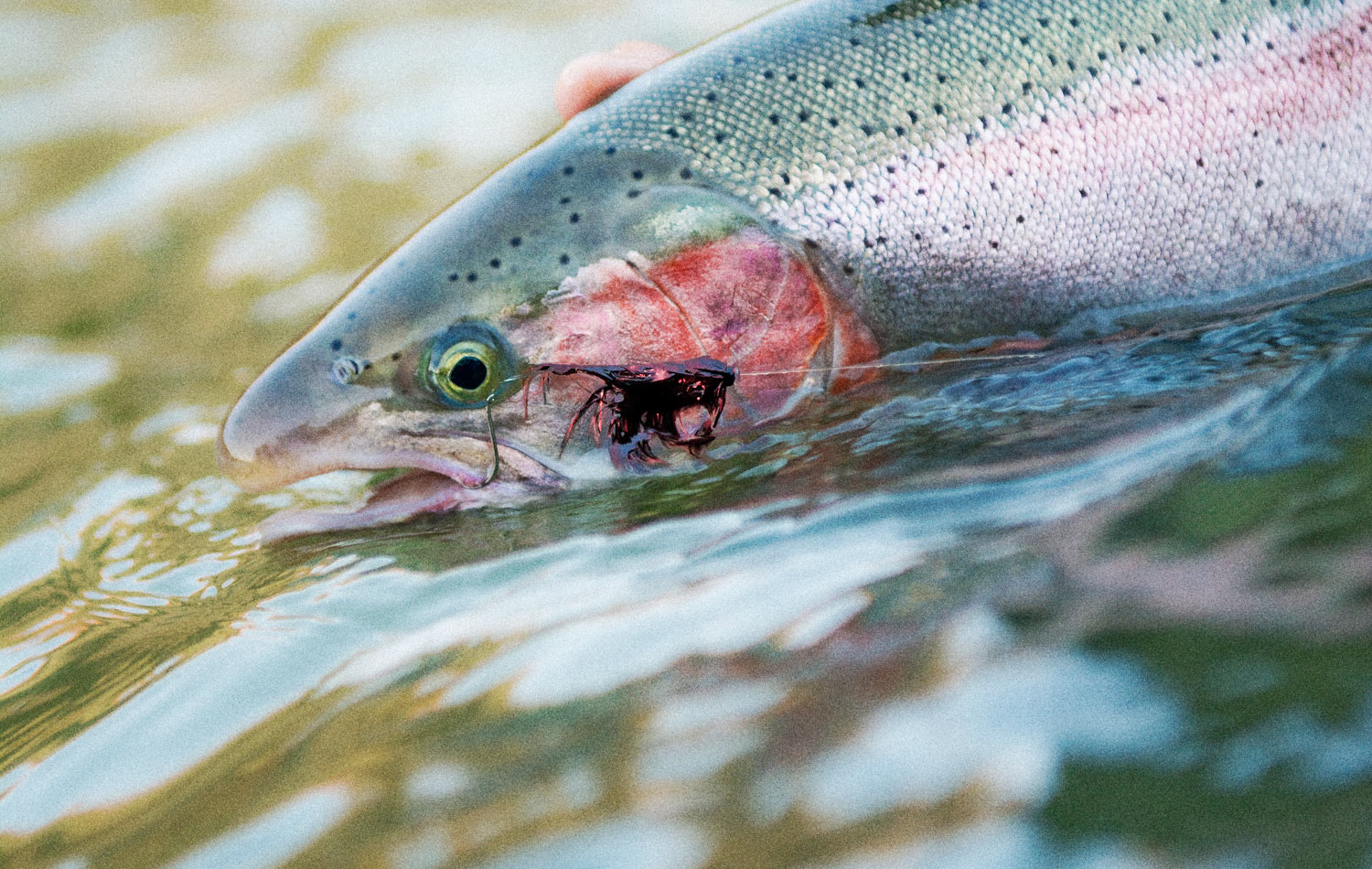
By Tim Harris
Can tenkara make one a better steelheader?
When I moved to the Pacific Northwest over 20 years ago I was thrilled to finally be living in the land of steelhead. The fish was almost mythic growing up in the Midwest and I’d spent a bit of time chasing them in the Pere Marquette to no avail. But now I was in the land where steelheading developed and even the flies got their names – patterns like the Skykomish Sunrise, the Sol Duc, the Umpqua Special, and the Macks Canyon.
It took me a long time to catch that first steelhead on the fly and then I “cheated” by getting it on a nymph on the Deschutes one fall. In fact, I got four steelhead in that one afternoon from the same run nymphing, which was crazy after almost decade with no fish. I guess I finally got payoff for the thousands of casts I’d made. After I got those first fish via nymphing out of my system I went to only swinging flies on spey and switch rods and I’ve never gone back. I used to get out a lot when our local river still had a summer run, and would get 2-3 summer fish per season there along with one on the Deschutes in the fall and maybe one on the Methow or Wenatchee when these opened up. Winter fish, however, eluded me for a long time. I finally got my first in 2013 on the Skagit, a beautiful wild hen of about 12 lbs. After that nothing, despite hitting our local rivers at least a handful of days each winter. Needless to say, my steelhead count was low, usually a handful of fish in a season with quite a few days spent on the water.
Then I took up tenkara and found that I could swing flies on the long tenkara rod for trout just like I swing flies for steelhead with a spey rod. With tenkara one has ultimate control over the swing with the sensitive rod and a relatively short amount of line. I often swing with a 20’ line which is a long line for tenkara but it allows me to easily mend, hold much of the line off the water if needed, or lead the fly in soft water to completely control the swing of the fly. I probably catch the majority of my trout on tenkara swinging flies and it has become my favorite technique. Plus it is perfect practice for steelhead and an 18” rainbow on my Rhodo seems about equivalent to a 26” steelhead on my 6-weight switch rod.
Has all this swinging on tenkara paid off?
I think so. Last winter I
How To Caych A Trophy Brown Trout
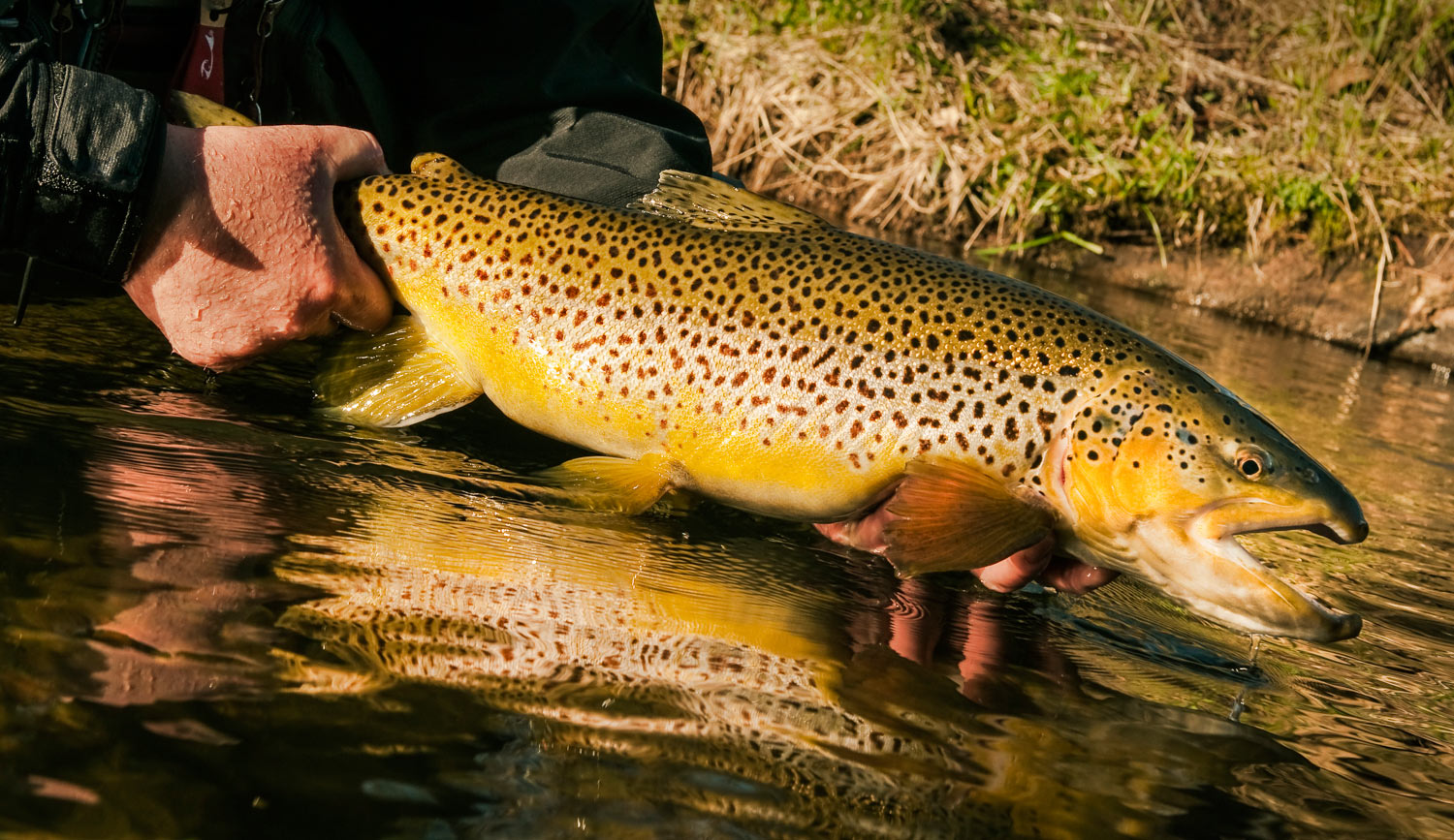
by Jason Tucker
I’ll never forget my first brown trout over 20 inches.
It was about 1:30 am after a very long float down a tiny stream. It had been a slow night with only a couple half-hearted tugs on our mouse imitations. We got down to one of the last holes with a feeding run above it and parked the boat. On my first cast the water erupted with a loud take but the fish missed. I placed my next cast where the fish had hit, made a couple of strips and let it coast. The strike was unmistakable, and I waited that extra half beat until I felt the fish before setting the hook. After a vigorous fight on my 5 weight we slid a 21-inch hook-jawed male into the net, took a couple of quick pics and let him go. It was a magical moment to be sure.
Since then I’ve caught several dozen fish over 20 inches, my biggest being over 28 inches long and about ten pounds. I’ve caught them at night and during the day by a variety of methods. That first 20+ inch fish was like flipping a switch for me. Which is why I’m surprised how often I still hear even experienced anglers express that they would love to catch a brown over 20 inches. Here’s a few tips to make that dream a reality.
KNOW THY TROUT
Brown trout have the potential to get big– really big. The world record is over forty pounds, and in lakes and reservoirs they commonly average ten to twenty pounds. In good water the only limiting factors are mortality and food abundance. River environments tend to limit brown trout growth more than lakes, but most streams will still hold good numbers of browns over twenty inches.
While young trout mostly feed on insects and larvae (think mayflies and nymphs) as they reach that magical twenty-inch mark, insects no longer serve to curb the appetite. At this point they become largely piscivorous, or fish eaters, according to researchers. While this is true, brown trout make the most of any opportunity, and this includes seasonal abundance brought about by the larger fly hatches. In midsummer they shift their diets to include mice and frogs eaten at night.
Another factor to consider is the changed social/dominance status that increasing size lends to them. Small trout have to fend for themselves as best they can, while large trout will always take up the best, most secure lies in a system, and defend them from other fish. This is often deep under a cut bank, or at the bottom of a log jam in a deep hole. As they grow larger they also prefer to feed after dark as long as available food sources permit this. You end up with a situation where smaller fish are forced to feed during the day and in positions easily fished to, while the largest fish feed only at night or in spots impossible to reach.
Don’t despair. Under the right circumstances those big fish will come out and feed. A prime example is
Read More »Wood is Good
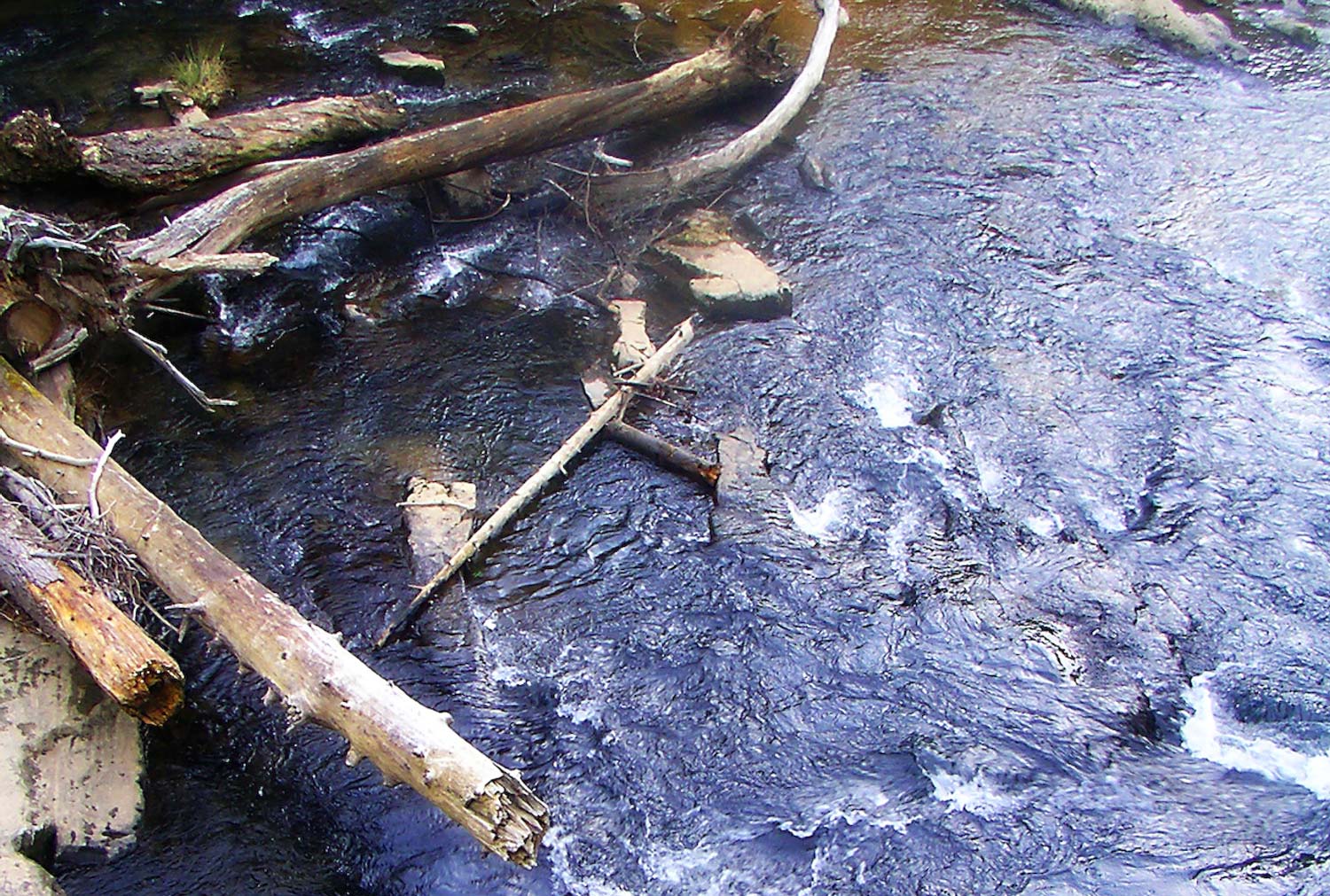
Target Woody structure and catch more fish.
“Wood is good”, shouted Sam Cornelius manning the oars, as I concentrated on drifting my flesh pattern against the never ending medley of wood snags along the Togiak River banks in Alaska, back in 2006. “When ever you see wood, drift your flies as close to it as you can, because fish are usually close by.
Read More »The New and Improved Simms G3 Waders: Video
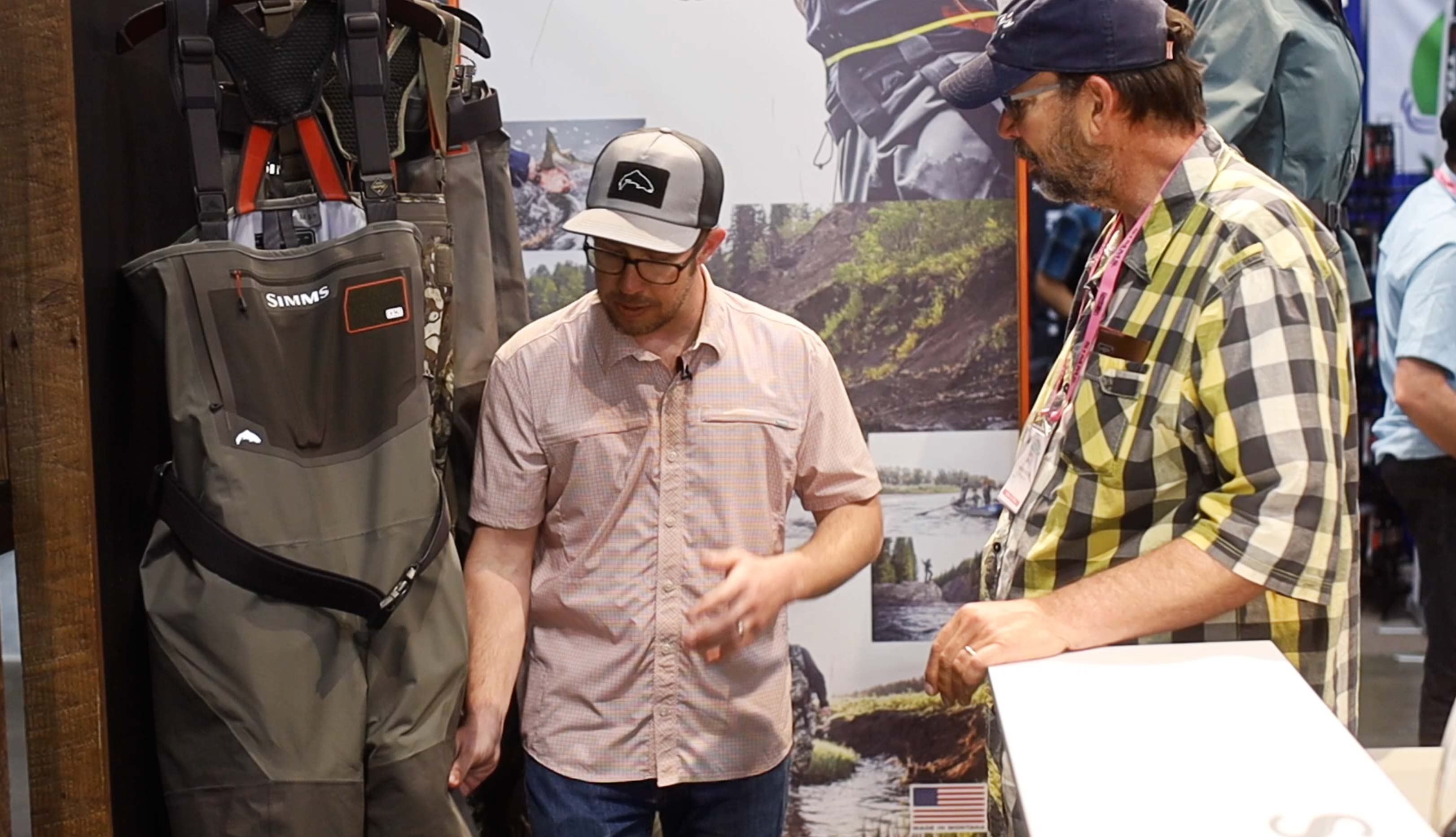
You have to be careful when you update an industry standard like the G3 Wader.
Fortunately, Simms knocked it out of the park. The new G3 waders take quality and design to the next level. I was, frankly, shocked at the look and feel of these waders. Every bit as nice as the G4 waders I have worn for years. If you’ve been putting off updating your waders, now might be the time.
WATCH THE VIDEO TO HEAR ABOUT ALL THE UPGRADES TO THE NEW SIMMS G3 WADERS.
Read More »